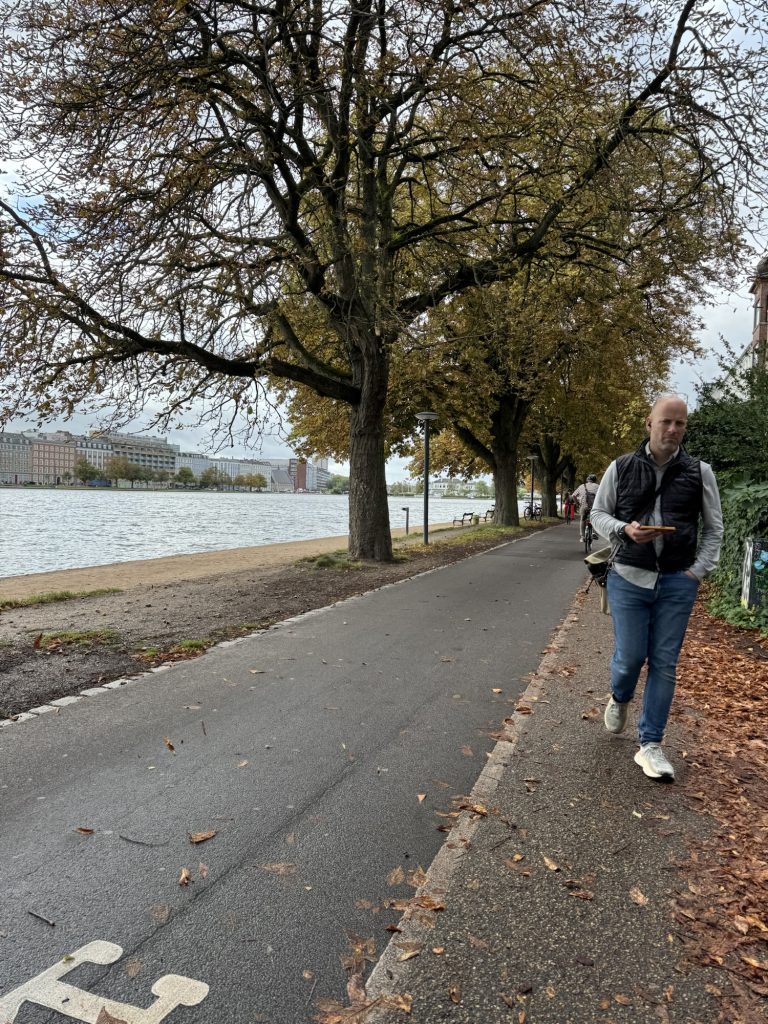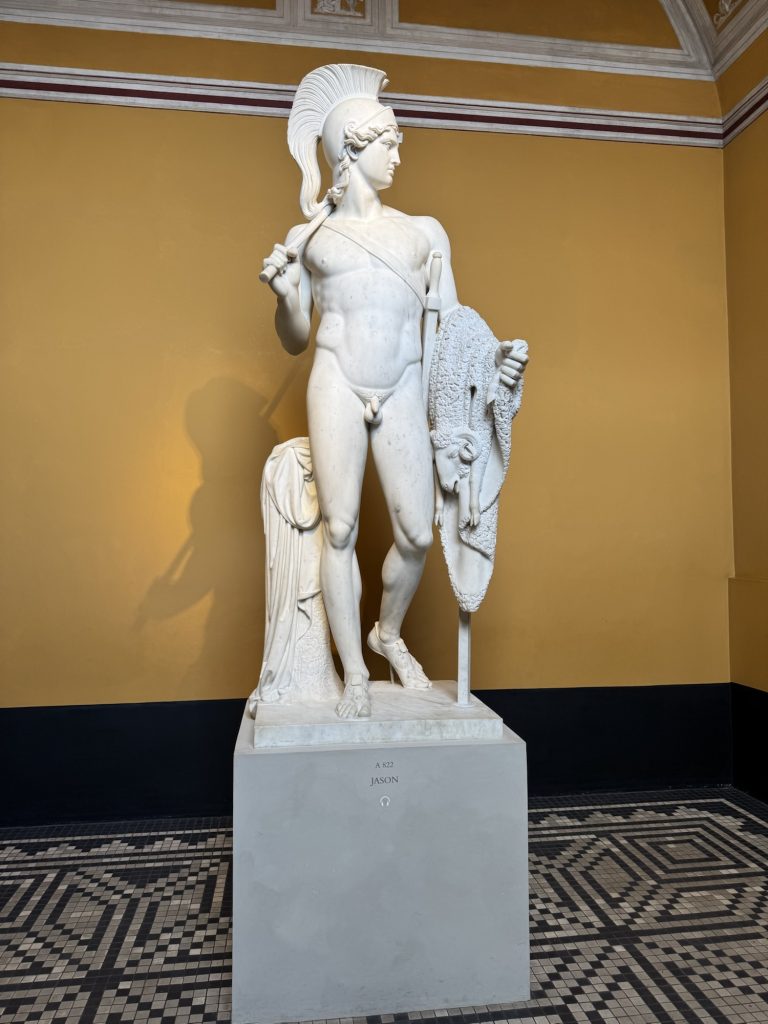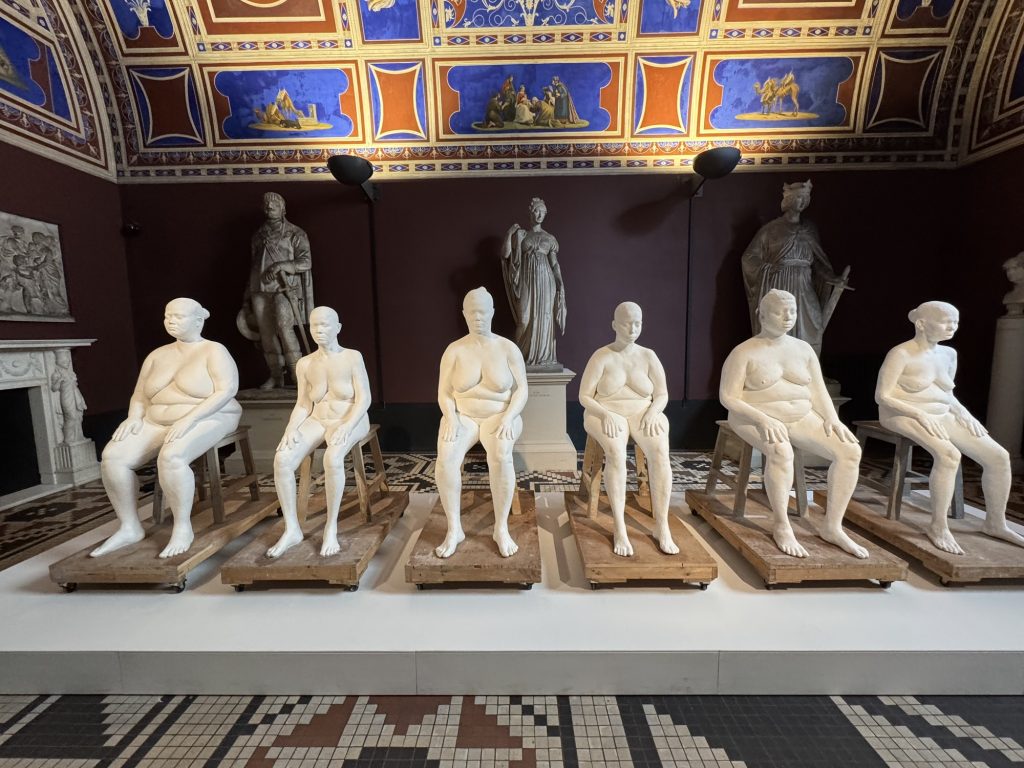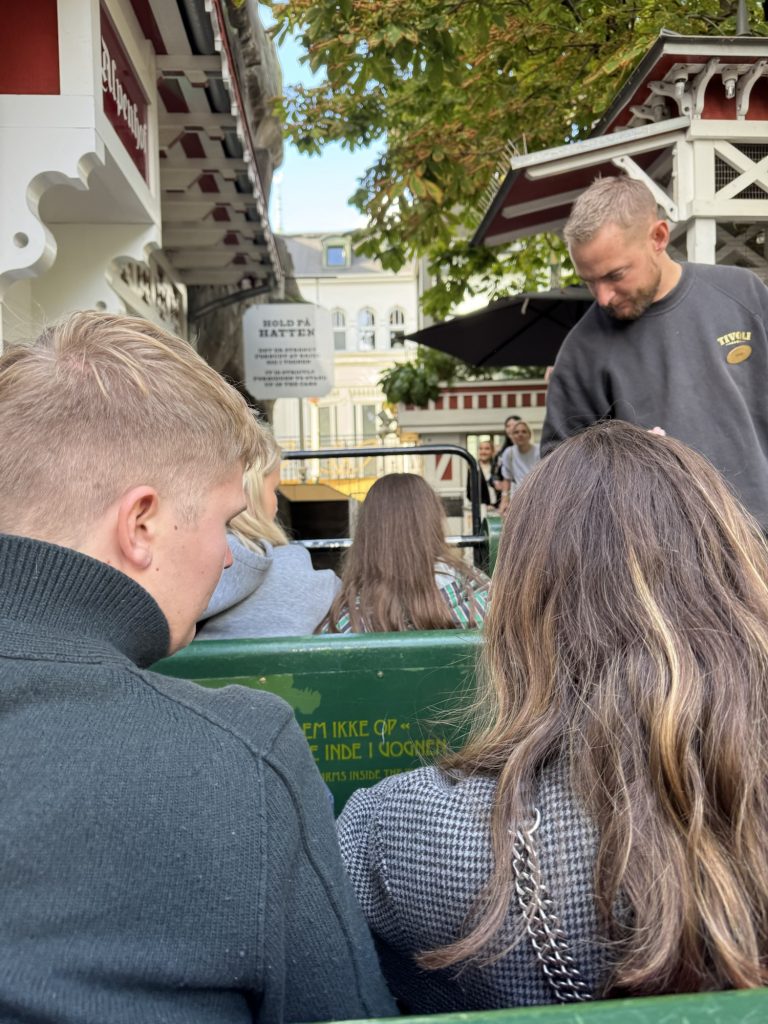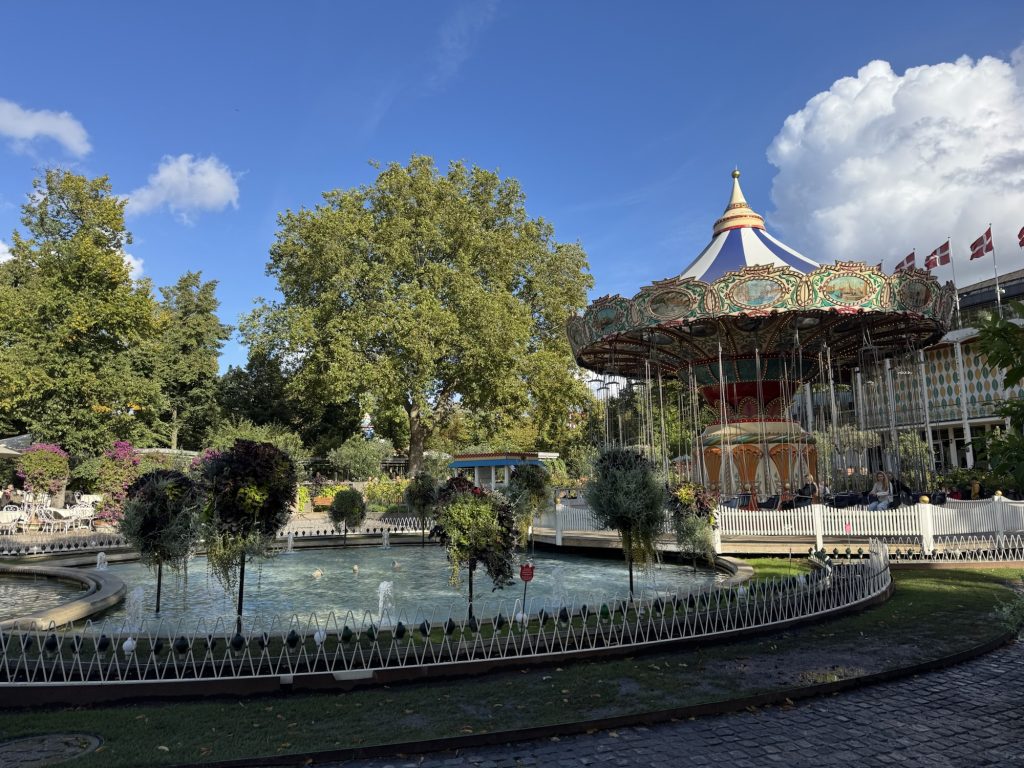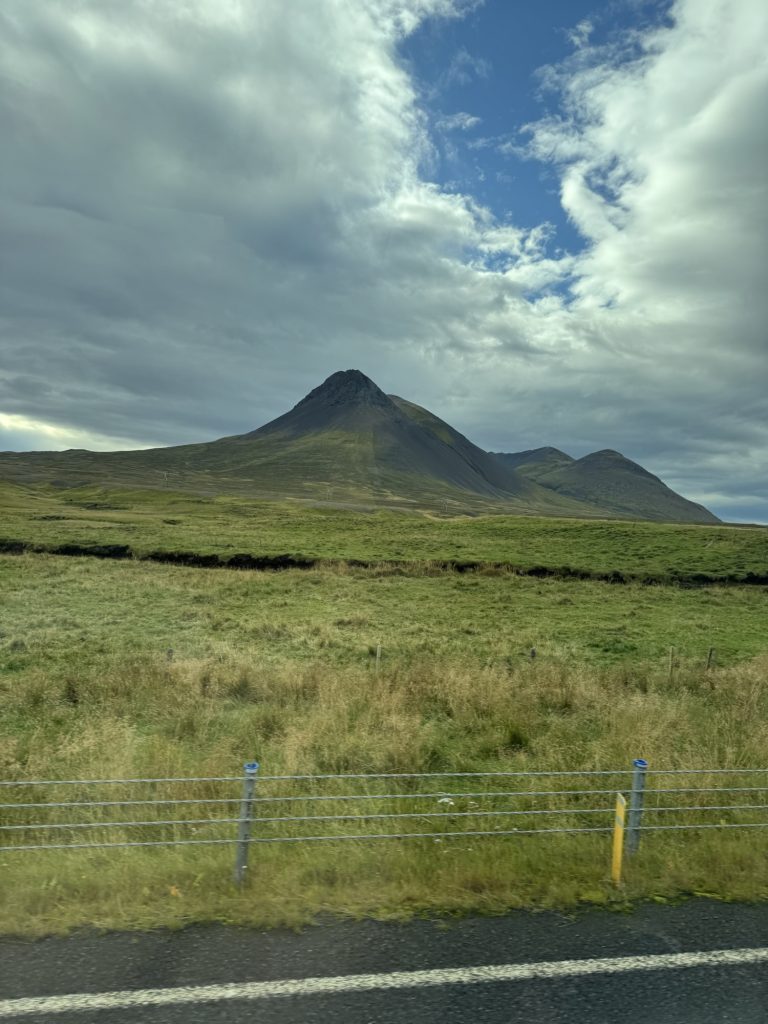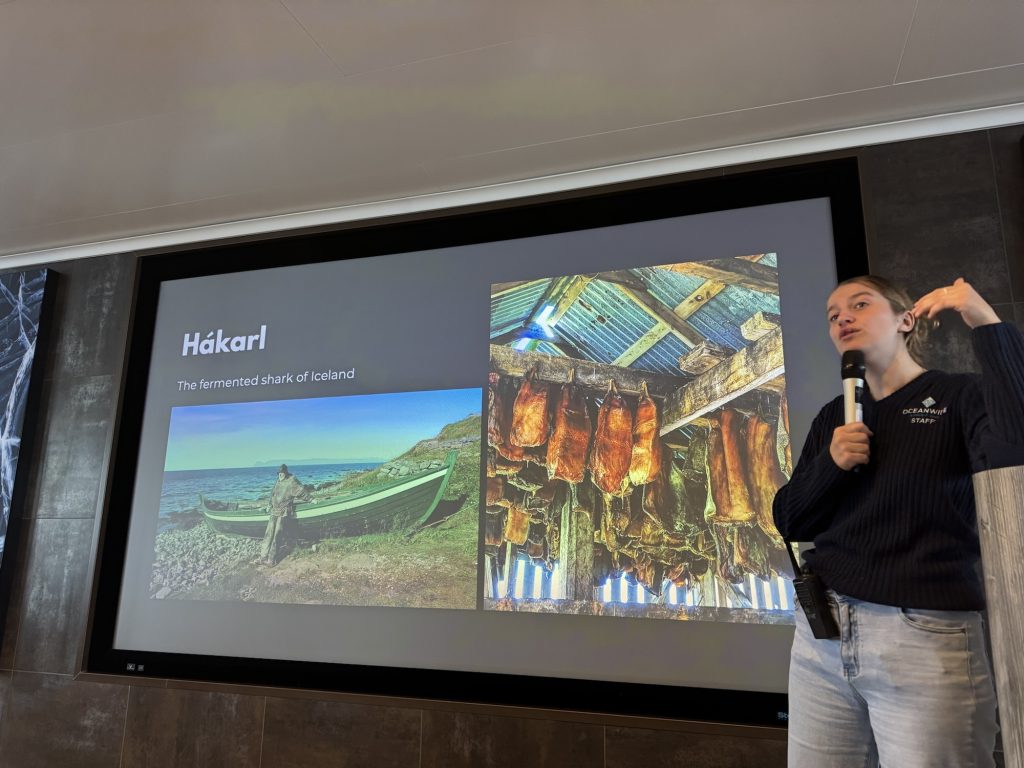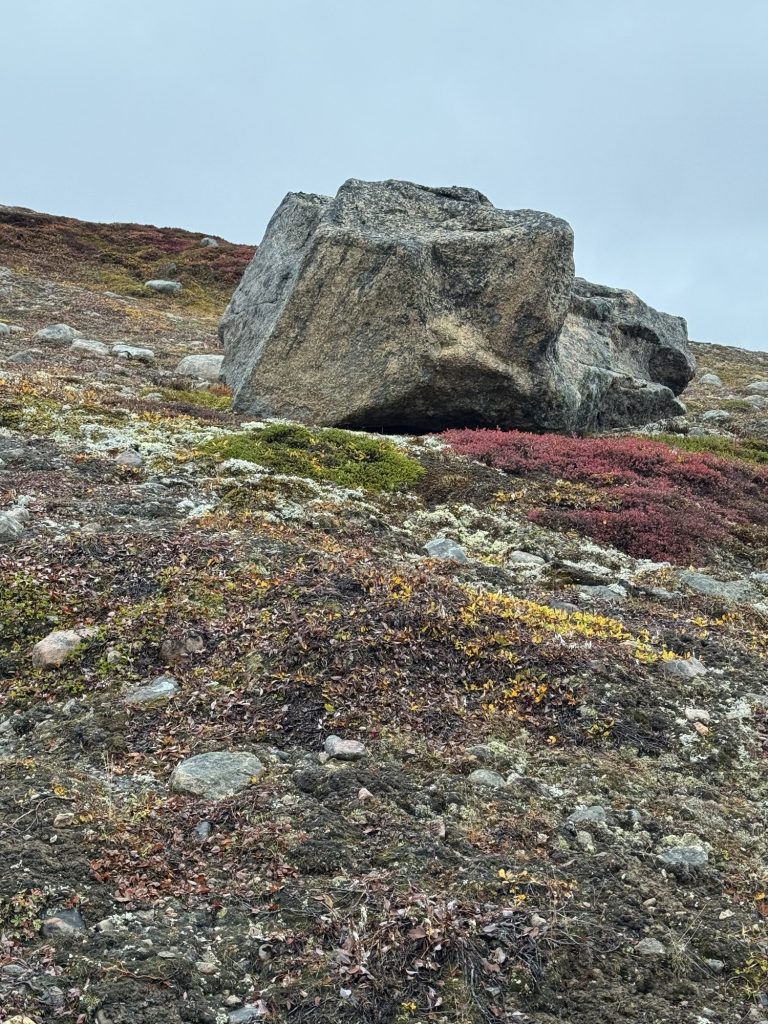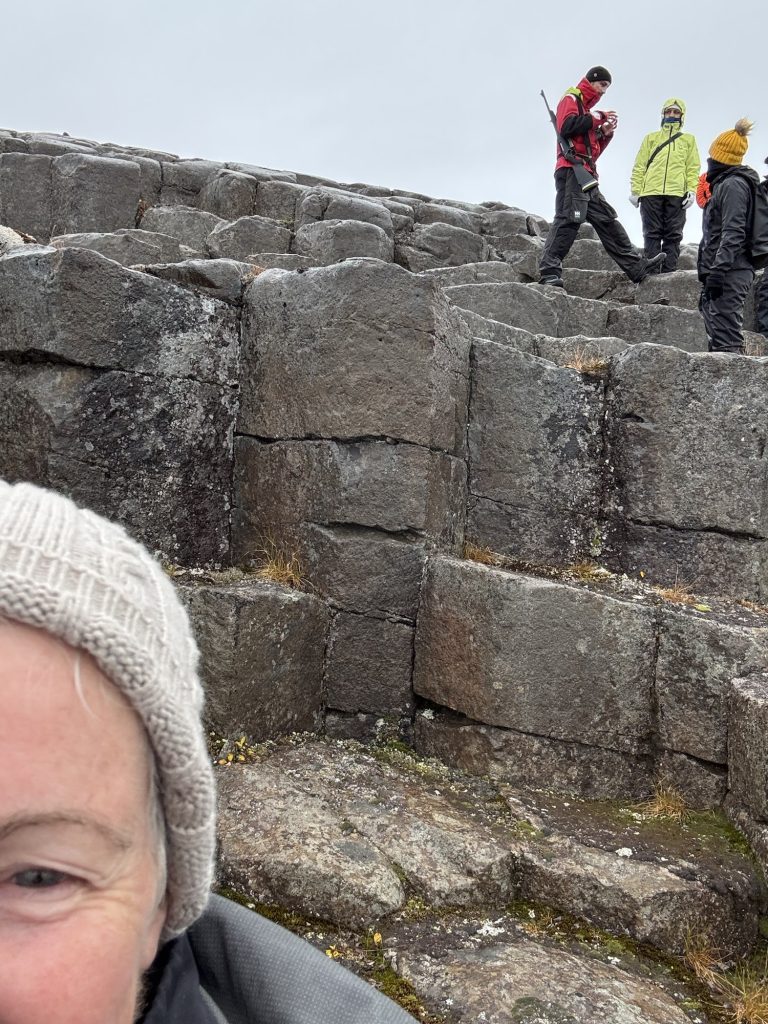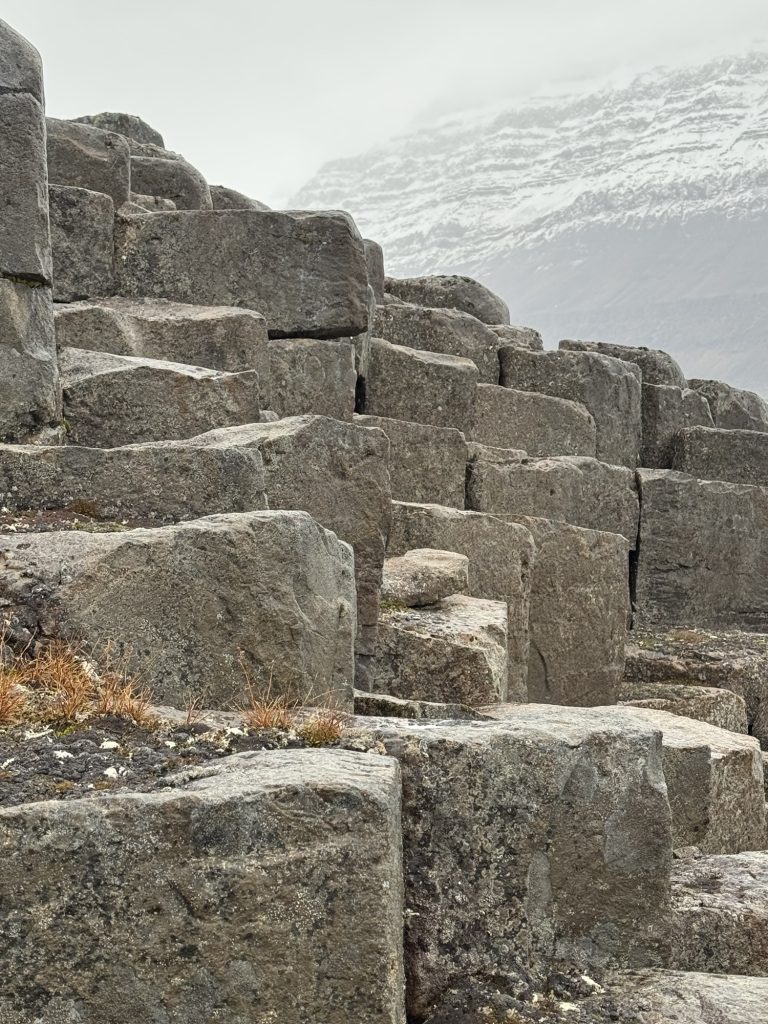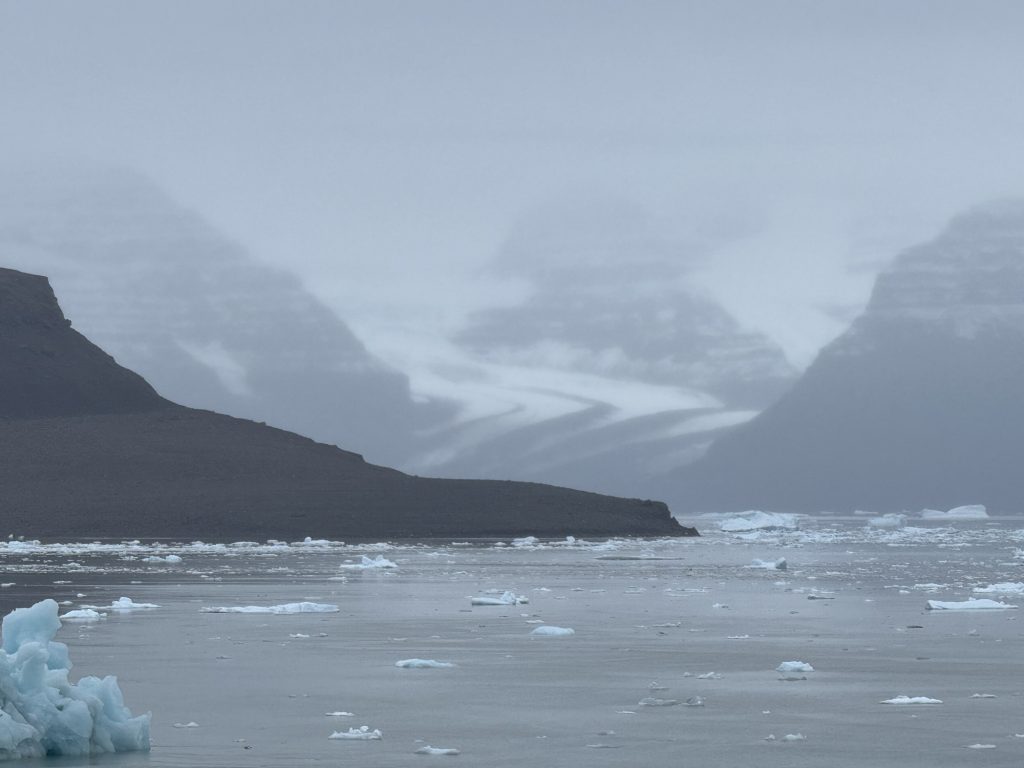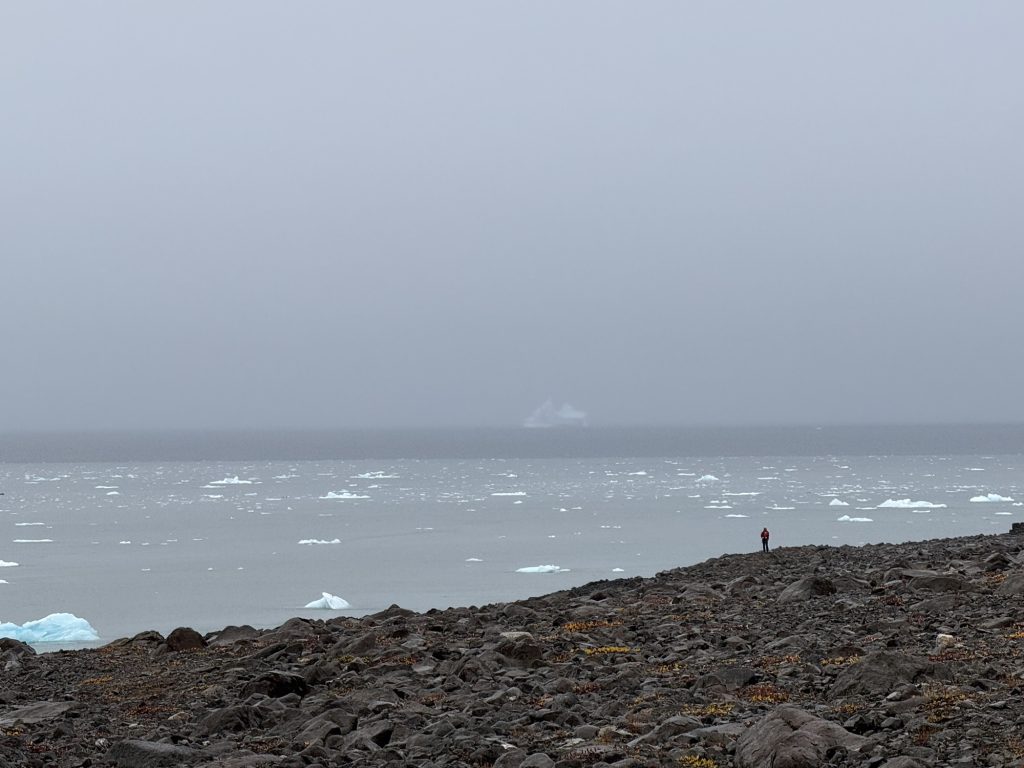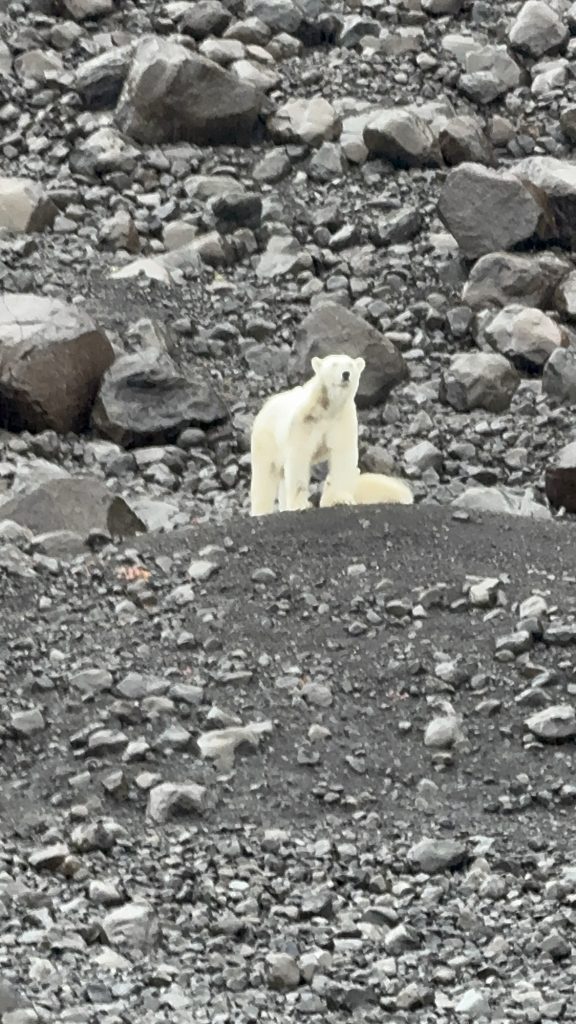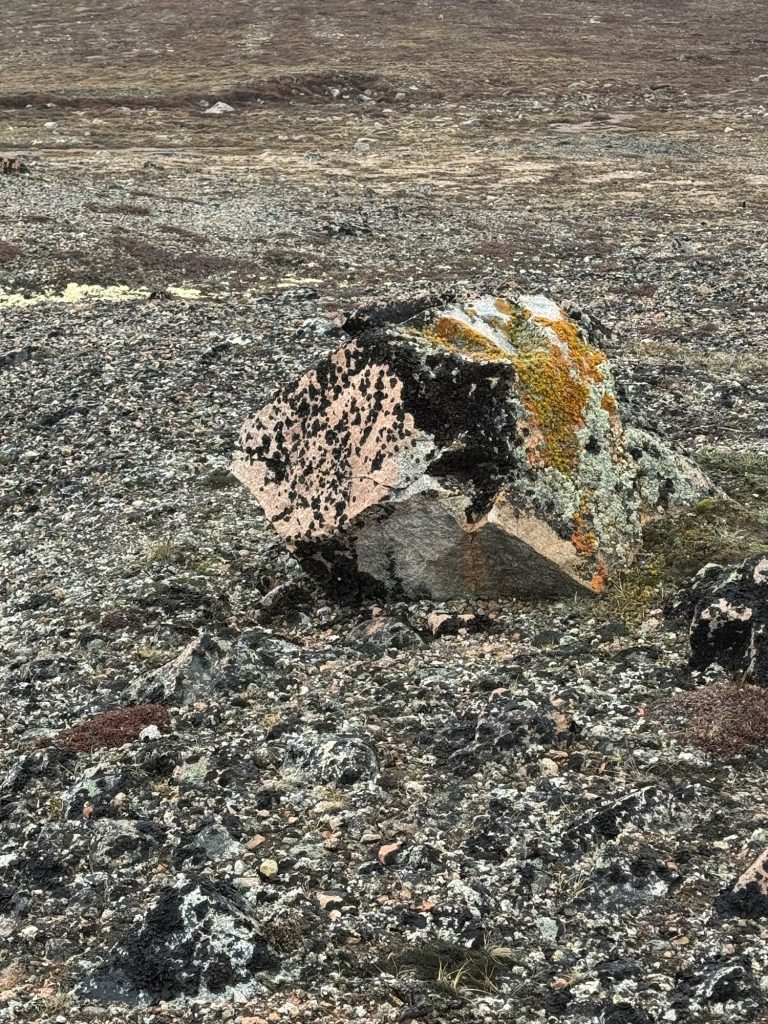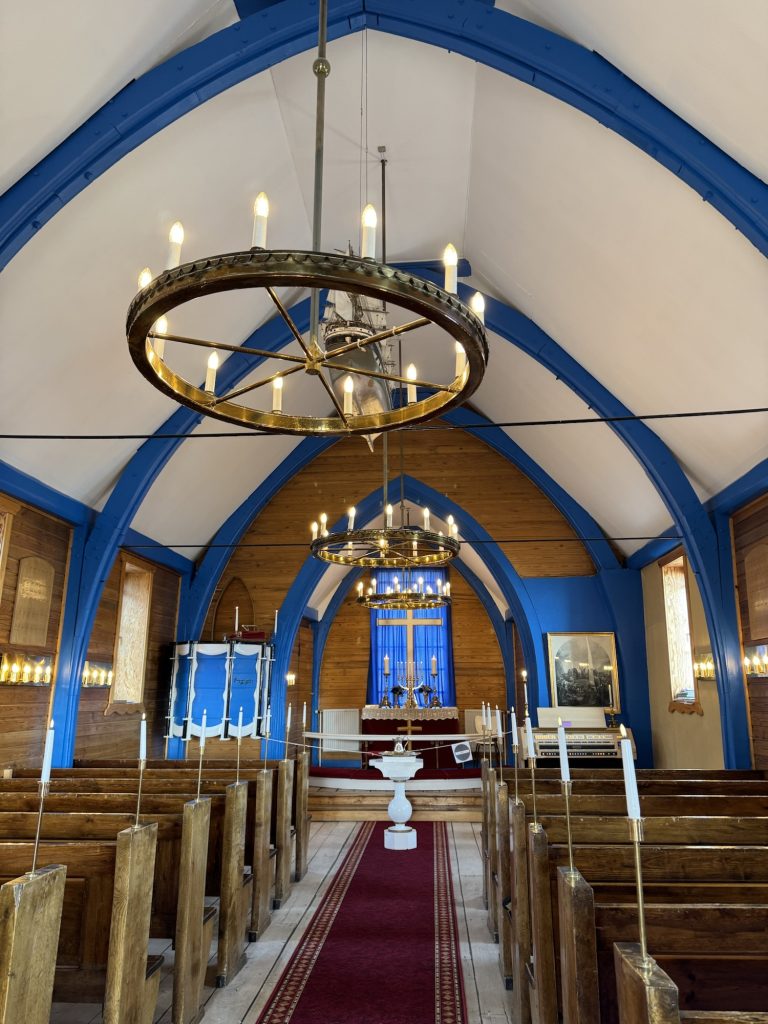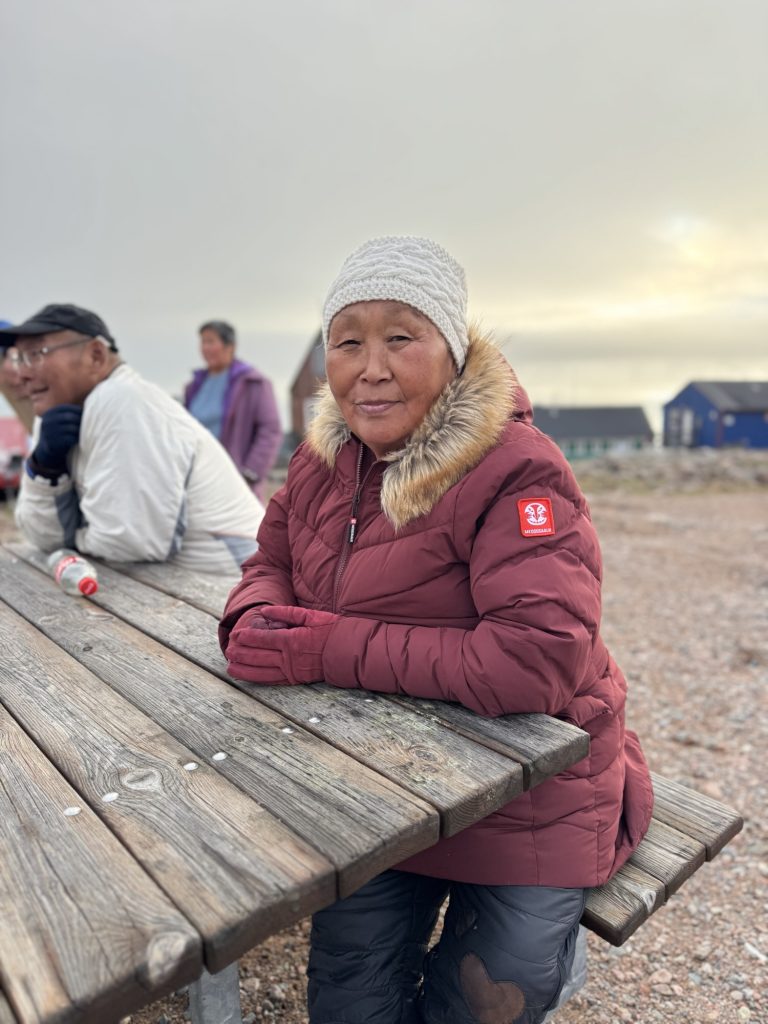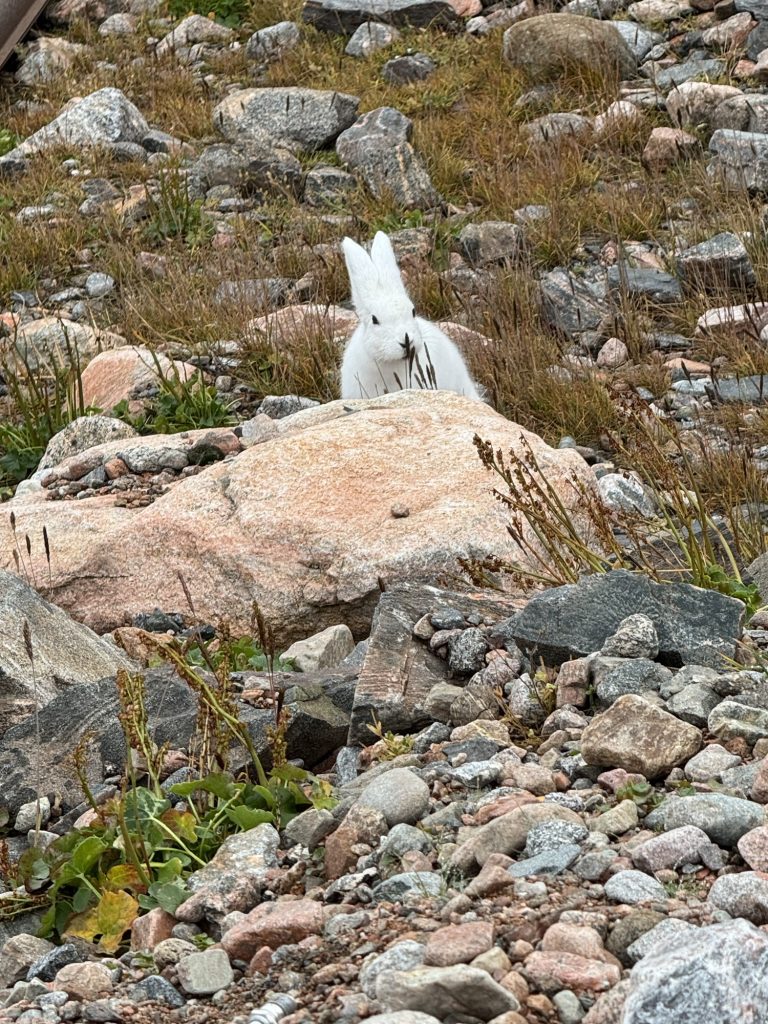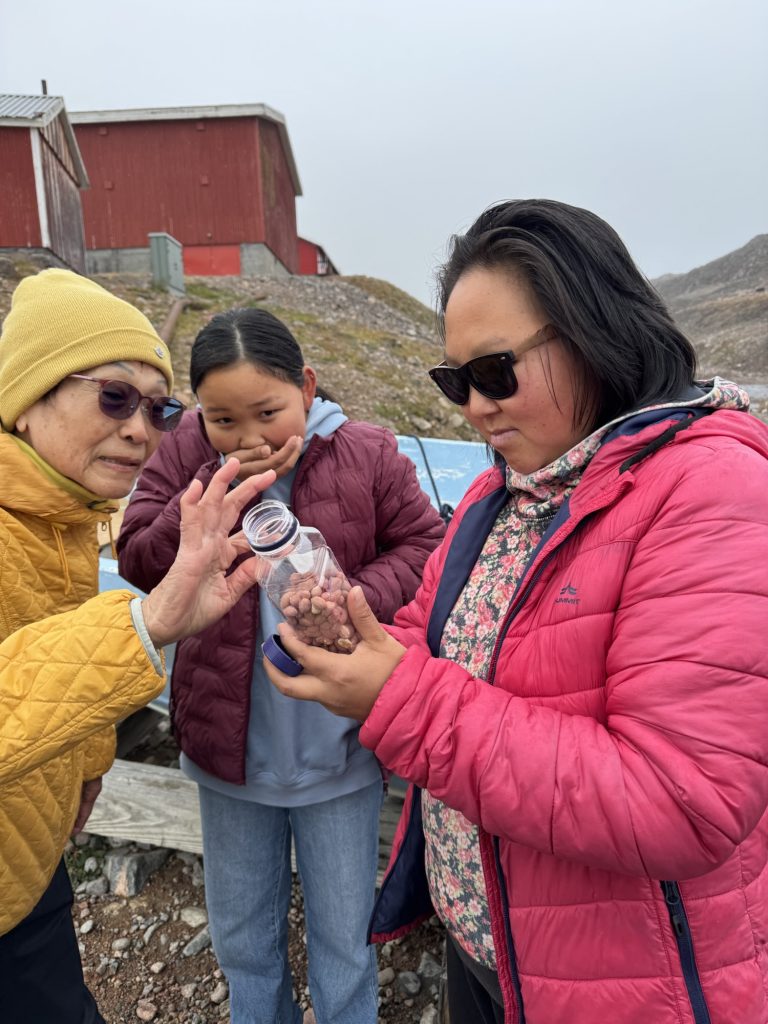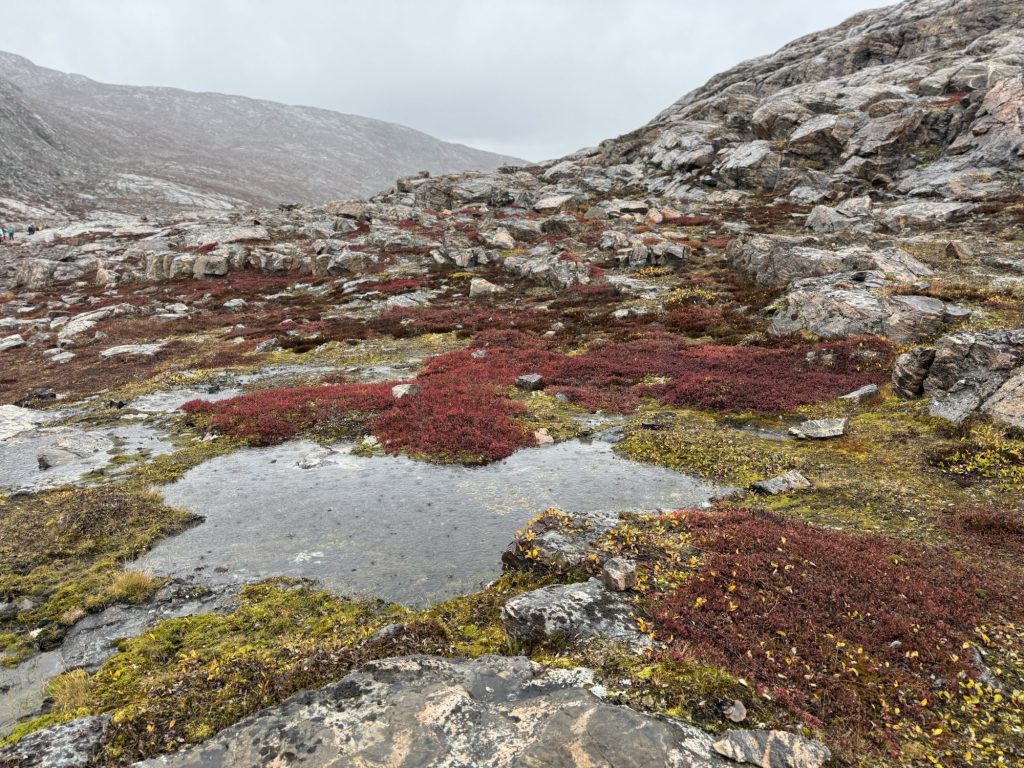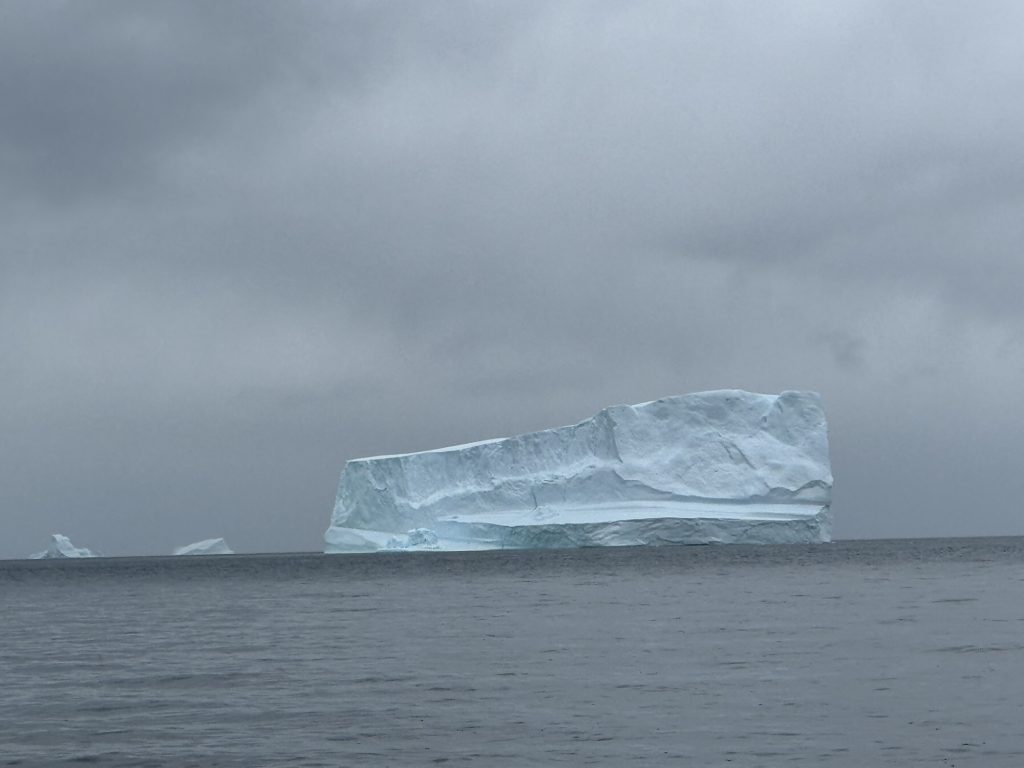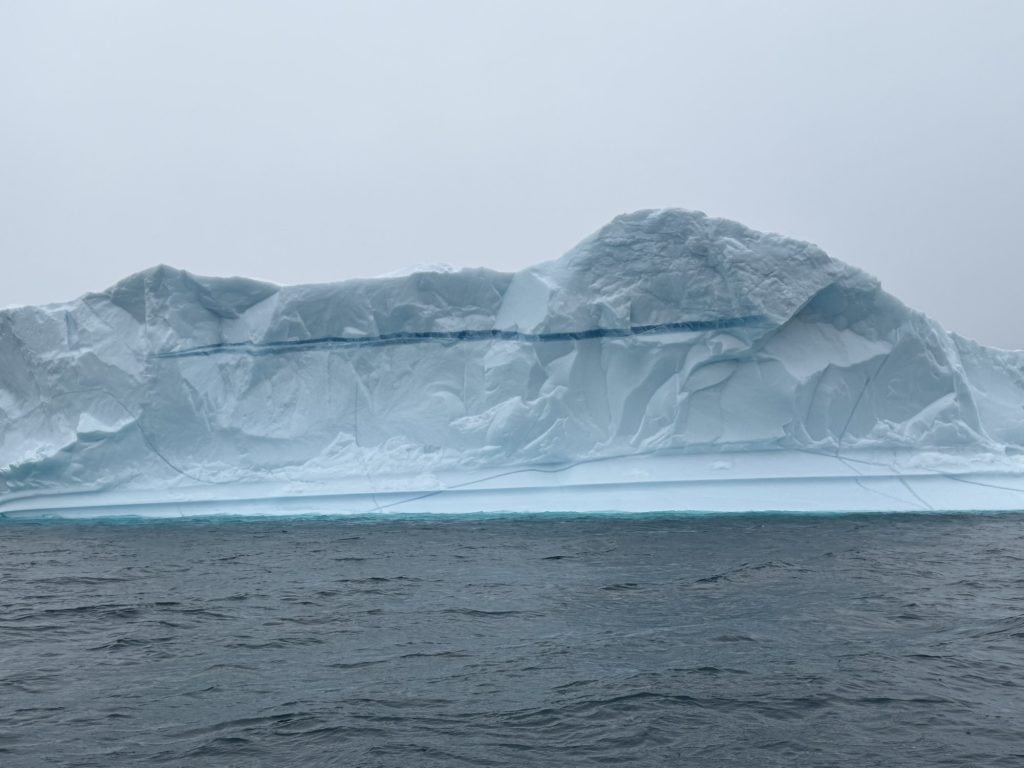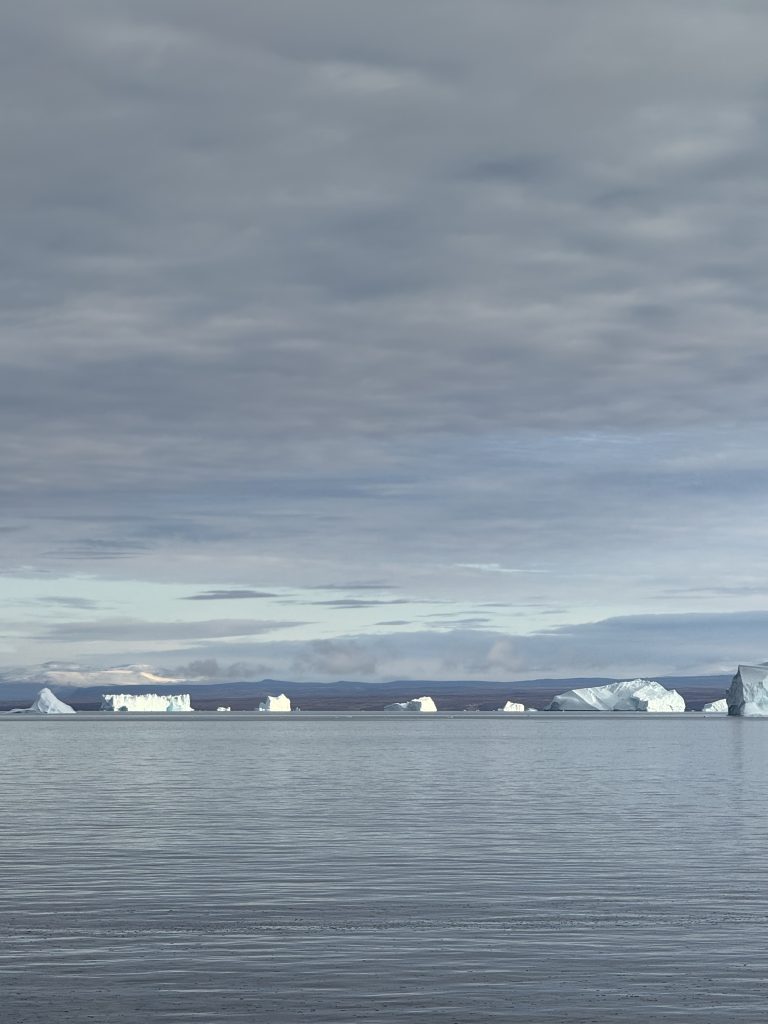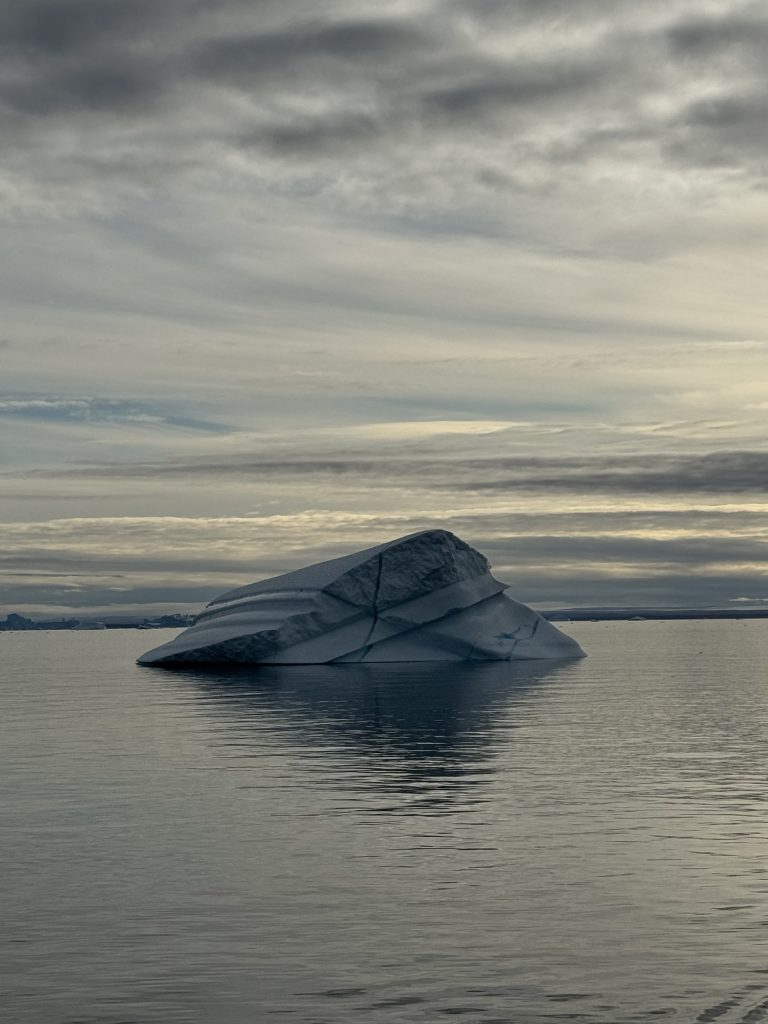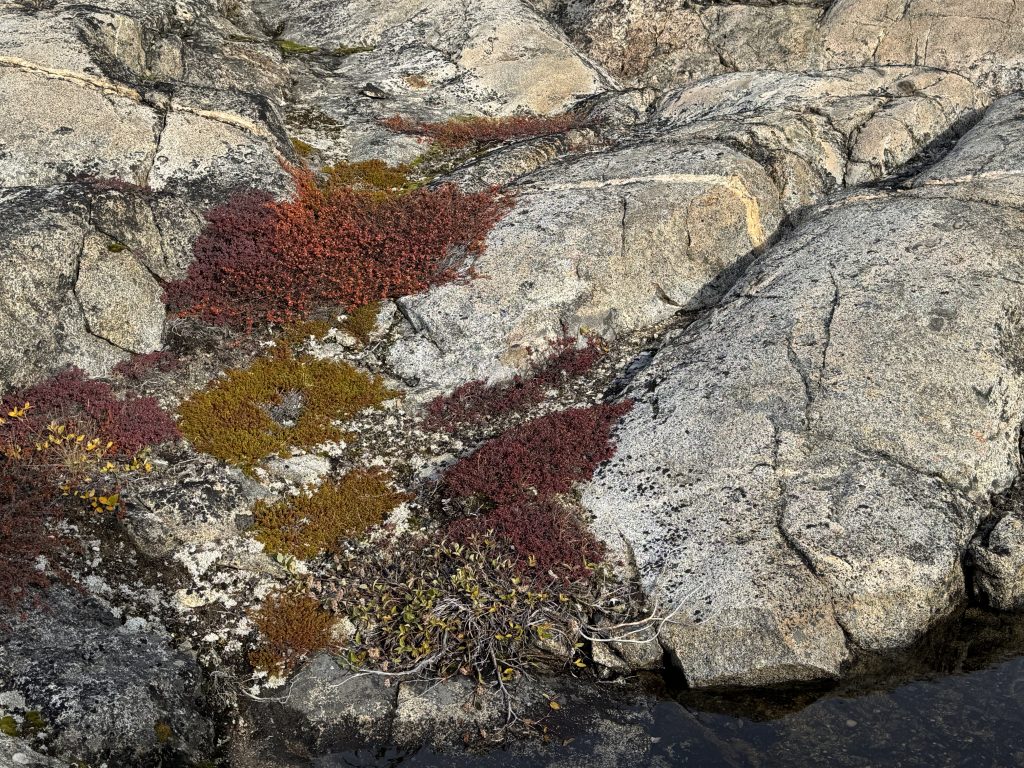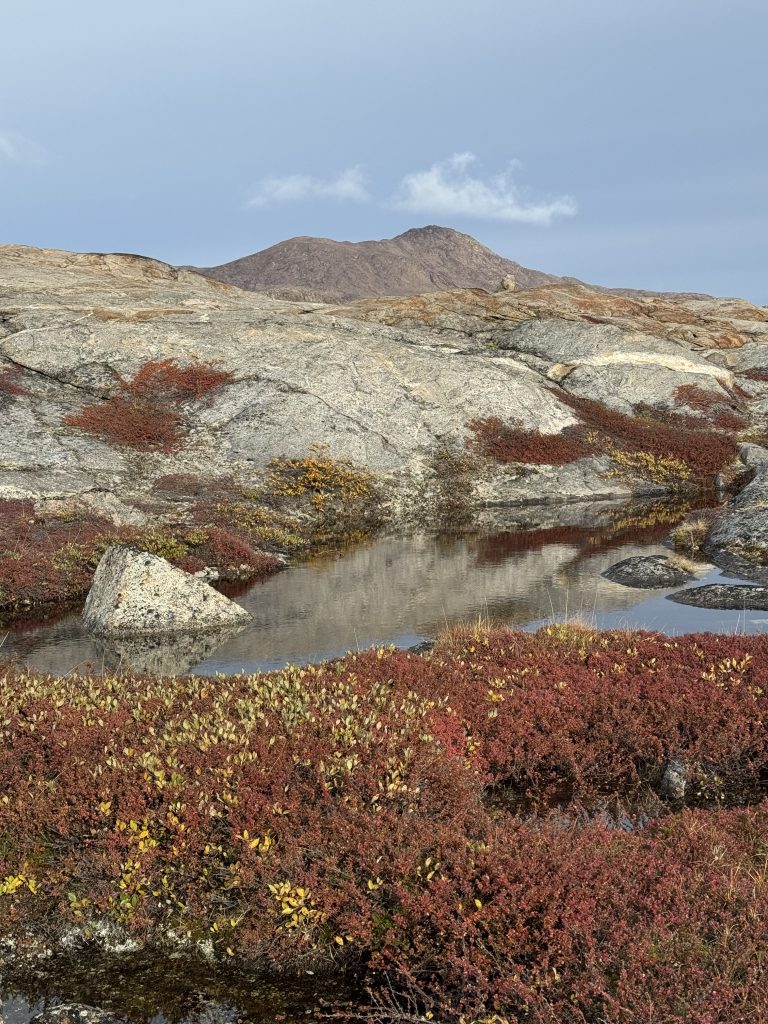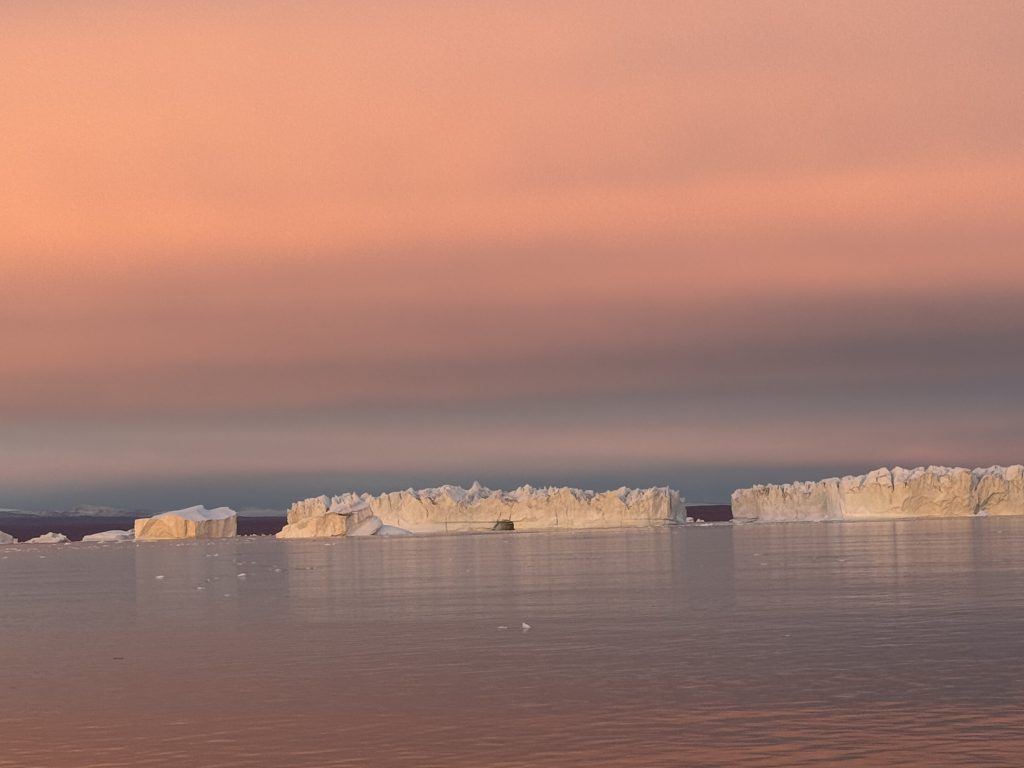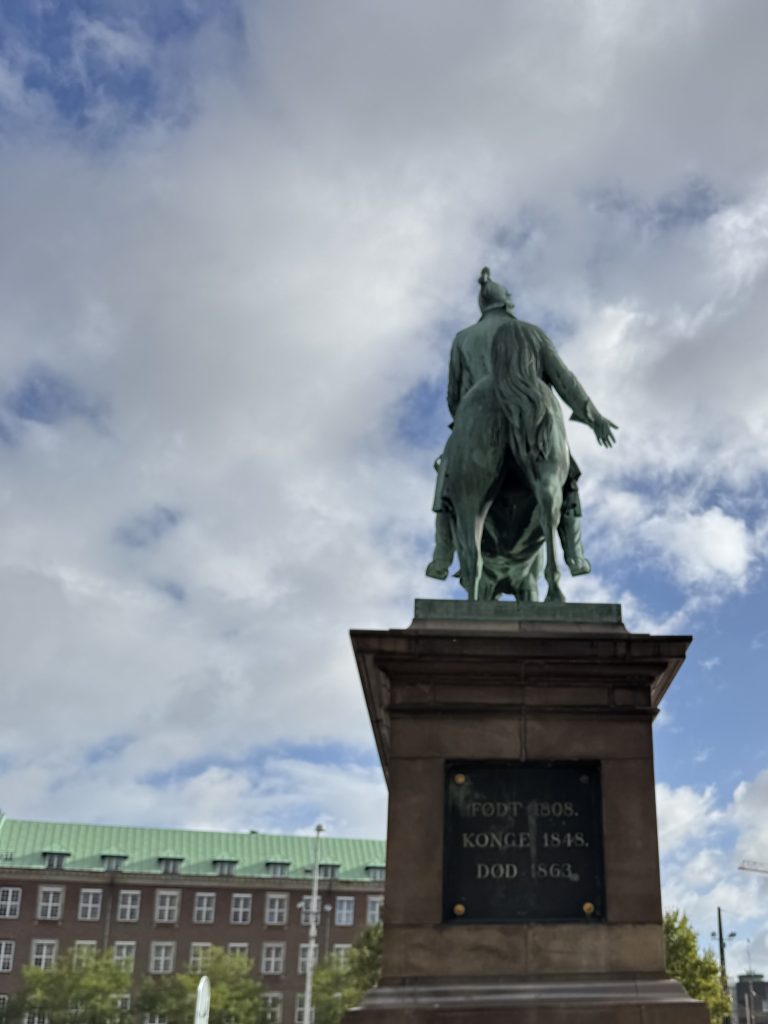
This is Frederick 7.
Penis shaped like a corkscrew. At least, this was according to a Russian diplomat at the time. He didn’t end up having any offspring, despite having two wives.
Today was the first day of the new tour. We had a morning’s tour of Copenhagen, then an afternoon canal tour. I’m the only solo traveller.

This is a view of the decorations above the parliament doorway. According to the guide we had for the morning, no one can remember what they signify, so they’re affectionately called “ the toothache” and “ the hangover.”

Here in the garden next to the Royal library is a statue of Kierkegaard.
His best quote is “ Life can only be understood backwards, but must be lived forwards.” So true.
Here in the garden, our guide told us about what happened here when the Germans invaded during WWII. This was a part of history I didn’t know about.
April 1940, Germany occupied peacefully, which wasn’t popular, but it allowed time for most of the Jews to escape to Sweden. Because Denmark didn’t put up a fight, Germany delayed rounding up their Jewish population for around 6 months. Sweden was neutral during the wat, so it was a safe, and very close, place to flee to. After the war, all their houses etc were saved for them and returned to them. Only 500 people were taken to concentration camps.
I had no idea about this.

Christian IX
He succeeded the corkscrew king. His wife was a Danish princess, which is how he got the job. The Danish monarchs are an endless list of “Christian, Frederick, Christian, Frederick “, with only two Margaret’s, one in the 1400’s and one last century, to mix it up. The current Frederick, who is married to an Australian woman, is the tenth one.
Christian IX’s daughters married well. Alexandra married Queen Victoria’s son Edward and the other was the second last Tsarina of Russia, born Dagmar but she took the name Maria Feodorovna when she went to Russia.
She was rescued from Russia when the Bolshevik revolution started, with her sister sending a warship from Denmark to bring her home. She died there, and in 2005 was reburied in Russia with her husband. She never believed that her son’s family was murdered in that cellar by the Bolshevik’s. Poor old lady.
Meanwhile, Alexandra became Queen of England after Victoria died. She’s the great-great grandmother of the current king.

Just think. Two weeks ago I was here watching the changing of the guard. The white palace on the right is where the King and his family live. The one on the left is where his mother, the queen who abdicated, lives. The dome in the middle is the marble church.

wow! We stopped here for a simple toilet stop, but I was blown away. Talk about a fairy tale castle!
In 1606 the king, Christian 4, bought land here to have a private castle for drinking and whoring. He had 26 kids – not by the queen. Over time he kept adding to it. At lunch today, before I went for my walk, I bought a ticket to come back here tomorrow.

l liked the angles of the roof.

Christian IV loved spending money. Much of Copenhagen appears to originate from his building programs. This is a series of small apartments that were built for the navy 400 years ago.Living conditions were not great back then, with each dwelling only 45 square metres.
The cholera epidemic in 1855 broke out here. “ It wasn’t a good time to be living here,” said the guide. No kidding.

And here I am, back to see The Little Mermaid again.
Look behind the Little Mermaid to the very futuristic building with the big chimney. Copenhill- converts garbage to electricity. All of the garbage from Copenhagen and some from England ends here. Cheap power for the city.
You can ski on it, there’s a huge climbing wall on the side of it, and there’s a restaurant. “Multi purpose! And so modern that a man can sit at home with an iPad and run it.”

The Danish princess Alexandra donated this English church near The Little Mermaid to her country. It’s quite pretty inside, with two memorial plaques for her husband, the king of England, and herself.

I saw this fountain when I walked to see The Little Mermaid, but there was no information board to give the story behind it. I was hoping to find out when it was time for the tour, and the story didn’t disappoint.
It’s a statue of a woman who slept with a king of Sweden and to reward her, he said, “you can have all the land that you plough in a day and a night. “
She was no ordinary woman, and could see an opportunity when it was presented to her. She turned her four sons into oxen and ploughed enough land in that time to equal the island of Sealand, ( The island where Copenhagen is), then she picked up the land and brought it back here and plumped it down and the guide said, “well it must be true because in Sweden there’s a lake that is about the size of Sealand!”

After this, it was time to see where Hans Christian Andersen lived when he began to write his famous stories. Remember when I saw this beautiful street when I was here last? I photographed it from the bridge but didn’t walk down it.

Hans Christian Andersen wrote his first tale here in the red house. He moved here in his youth, and even when he was rich and famous, he never bought his own house, preferring to live here on the canal.
He spent the last year of his life in the yellow house. The basement is now a gift shop.
We walked past it and we taken back to the centre of town, where we were dismissed for lunch. I had a couple of bread rolls I swiped from breakfast, so zi was set. I decided to make my way back to the canal. I really wanted to soak myself in the colours and atmosphere.

But first I went back to the gift shop and bought an expensive book of his tales. I’ll keep it with the Beatrix Potter book I bought when I visited her house.

It’s no wonder he was happy to live here all his life. Especially back then, before it was all cafes and restaurants, there would have been so much colour and excitement here.

A nice little nod to the past.

I wasn’t exactly sure how to get back to where we were meant to meet up, but I was pretty sure I recognised the spire that was above the modern art show I went to yesterday, so I aimed for that and set off.
I was correct, and was ready for our canal tour. It lasted an hour and we went all over the city.
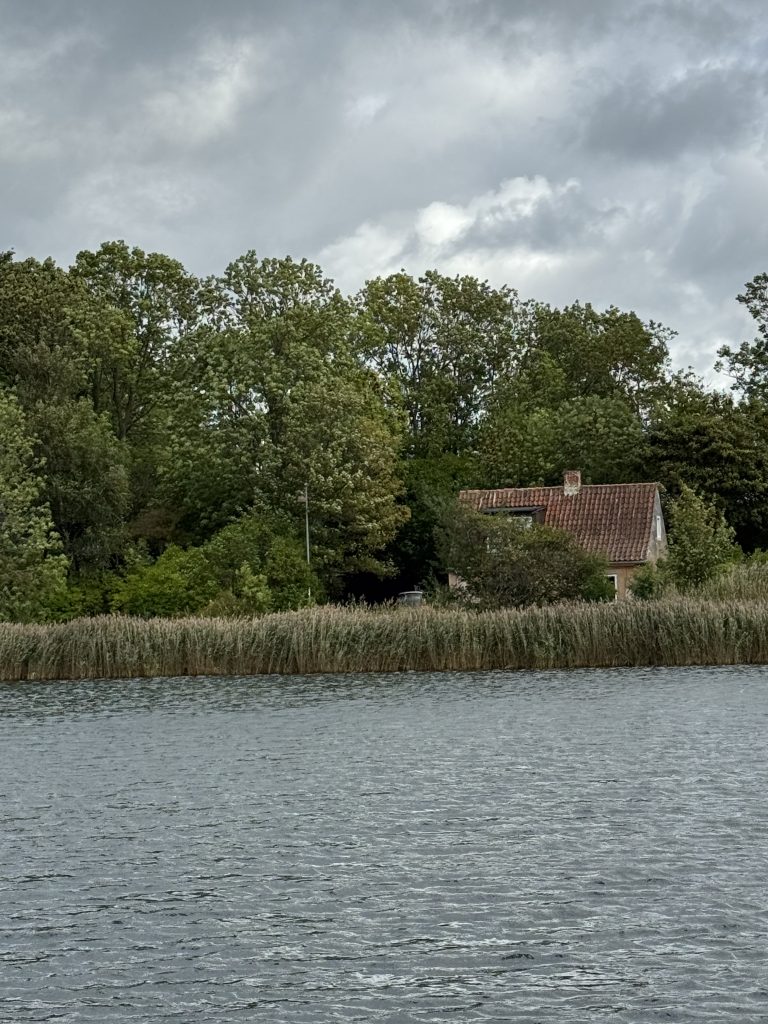
Pretty little sight among apartments and houseboats.

My god! More white-faced ducks!! First at Lake Crackenback in the Snowy Mountains last year, then in Japan in March, now here in September. Are they a world-wide phenomenon?

The Little Mermaid from the other side.

I was absolutely taken by this amazing church tower. Isn’t it incredible?

Some of these bridges are REALLY low. This is how close it came to my head.
After the cruise, our guide, Jan, was going to walk us back to the hotel. It was only 3 o’clock!
”Are you coming back with us, Frogdancer!” he asked.
”Look at her face!” chuckled one of the guys. “Frogdancer doesn’t want to.”
He was right. It seemed like such a waste, but what could I go and see?
Then I knew. I waved goodbye and set off.

Is it just me, or does this red house look like it’s crumpling to the ground?
I had a 17 minute walk over the bridge and to the other side of town.

Oh yeah, baby! I was going to climb to the top of this spire.
Why not? This year’s holidays, I seem to be climbing to the top of everything in sight. Might as well add this to the collection.
I had to wait 30 minutes. Lucky I had a book of fairy tales to read.

It was a very windy day, and when I emerged from the church at the beginning of the spiral, I snatched my Japanese souvenir beanie from my head, stuffed it into a pocket and zipped it up. That wind was strong, and I could easily imagine it taking the hat from my head.

My phone was rapidly running out of battery. This is a shot taken almost at the top. The spire allows a 360 view of the city. It’s stunning.

As I was coming down the stairs, I brushed against a couple of Americans on their way up.
“We’re all going to get close,” the woman said.
” Well, you’ve just touched Australia!” I said.
As I walked out into the churchyard, I was worried about saving battery power in case I needed to call an Uber to get back to the hotel. Then, I realised that I have a pretty good idea of where things are located in Copenhagen. I’ve been doing a lot of walking here, after all. I thought I had a pretty good chance of navigating my way home without using Google Maps.
I decided to give it a try.
I was crossing the bridge and turned back to say a last goodbye to the spire.
It turns out that yes, I know Copenhagen pretty well. I revisited the pretty little garden with the sculptures that I found when I was here before, and after a 45 minute walk, I was turning into the Comfort Hotel.

I decided I deserved a glass of the house red as a reward. This is the first foreign city where I feel confident to walk around and take risks with navigation.
I don’t mind admitting that I felt proud of myself. I’m usually following tour guides around like a little duckling. I’m pleased that I can find my way around here by myself.
Tomorrow is our last day in Denmark. We have most of the day free, but at 3pm we set off to take an overnight ferry ride to Norway. I’ll be walking 40 minutes to see that magical-looking castle. Apparently, it houses the Crown Jewels.
Dad joke of the day:

